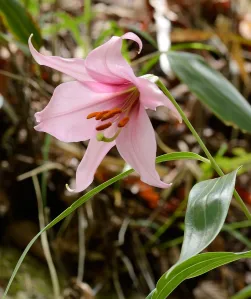Dec . 04, 2024 09:13 Back to list
oem pollen collection of male flowers of kiwifruit
Pollen Collection of Male Flowers in Kiwifruit A Vital Process for Successful Pollination
Kiwifruit, scientifically known as *Actinidia deliciosa*, is a fruit-bearing vine native to China and widely cultivated in various parts of the world. Known for its distinctive fuzzy brown skin and vibrant green flesh, kiwifruit is not only delicious but also packed with nutrients. However, the successful cultivation of kiwifruit relies heavily on effective pollination, which is primarily facilitated by the pollen collected from male flowers. In this article, we will explore the methods of pollen collection from male kiwifruit flowers, its importance in horticulture, and the potential challenges faced in this process.
Understanding Kiwifruit Pollination
Kiwifruit plants are dioecious, meaning they have distinct male and female plants. Male flowers produce pollen, while female flowers are responsible for fruit development. For optimal fruit set, both male and female flowers need to be present, as well as the transfer of pollen from male to female flowers. Pollination in kiwifruit can be accomplished by various means, including wind, insects, and manual intervention.
The Importance of Male Flowers
Male kiwifruit flowers play a critical role in the overall health and productivity of kiwifruit crops. Each male flower can produce a substantial amount of pollen, which is essential for fertilizing numerous female flowers. The abundance of high-quality pollen directly influences fruit size, quality, and yield. Therefore, understanding the characteristics of male flowers and developing efficient pollen collection methods is vital for successful kiwifruit cultivation.
Pollen Collection Methods
1. Manual Collection One of the most effective methods for collecting pollen from male kiwifruit flowers is through manual methods. This involves selecting mature male flowers, which typically have a rich yellow color in the anthers. Using fine brushes or small containers, pollen can be gently tapped or brushed from the flowers and collected for later use. This method allows for targeted collection, ensuring that only the finest and most viable pollen is harvested.
2. Mechanical Collection In modern orchards, mechanical devices are being developed to assist in the collection of pollen. These devices can vibrate or gently shake male flowers, causing pollen to be released and collected into containers. This method can improve efficiency and reduce the labor intensity associated with manual collection.
oem pollen collection of male flowers of kiwifruit

3. Storage and Viability Once collected, kiwifruit pollen should be properly stored to maintain its viability. It is advisable to store pollen in a cool, dry environment. In some cases, freezing or desiccating the pollen helps preserve its germination capability for future use.
Challenges in Pollen Collection
Despite the relatively straightforward methods of collecting pollen, several challenges can arise.
- Timing The timing of pollen collection is crucial as it must coincide with the male flower's peak pollen production, which typically occurs just before flowering.
- Weather Conditions Environmental factors such as wind and rain can impact pollen dispersal and viability. In wet conditions, pollen may become clumpy, reducing its effectiveness for fertilization.
- Pest and Disease Management Pests and diseases can affect both male and female plants, which may reduce the quantity and quality of pollen produced.
- Genetic Diversity Relying on a limited number of male plants for pollen can lead to reduced genetic diversity, which is essential for robust fruit production. Therefore, it is beneficial to cultivate multiple varieties of male kiwifruit flowers to ensure a richer pollen source.
Conclusion
The collection of pollen from male flowers of kiwifruit is an intricate yet vital process for ensuring the successful pollination of female flowers, directly impacting fruit set and yield. By utilizing effective methods of collection and addressing potential challenges, kiwifruit growers can enhance their practices to achieve healthier crops and higher fruit quality. As the demand for kiwifruit continues to rise globally, refining pollen collection techniques will be essential for maintaining the productivity and sustainability of kiwifruit cultivation.
-
Pollen Peach Tree for Pure Pollination and High-Quality Peach Pollen
NewsJul.30,2025
-
Premium Cherry Pollen for Pure Pollination & Different Types
NewsJul.30,2025
-
Artificial Pollination Solutions for Various Plant Pollen Types
NewsJul.29,2025
-
Artificial Pollination Solutions for All Plant Pollen Types
NewsJul.29,2025
-
Premium Plant Pollen for Pure Pollination & Pollen Block Solutions
NewsJul.29,2025
-
Artificial Pollination Solutions for Efficient Crop Yields
NewsJul.28,2025